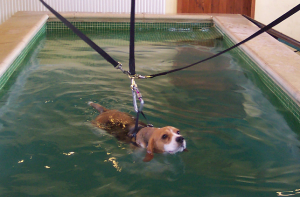4. Reflection as a quality improvement tool
At its simplest level, we can use reflection to assess clinical outcomes – either as an individual or as a group (for example, during clinical rounds).
We often only reflect on the cases where something went wrong or we had an unexpected outcome. However, any decision can benefit from reflection (Koshy et al., 2017) – whether it is implementation of a well-researched new treatment, diagnostic or biosecurity protocol or simply reflection on a series of cases that were managed in a particular way in order to better understand how that management might be improved. If we don’t reflect on what we are doing, our practices may remain stagnant and become rapidly outdated.
Reflection and unstructured EBVM is simple and easy to incorporate into everyday practice, but it is important to try to still follow the EBVM cycle. Reflection without support of the literature or without a clear question can lead to a vague outcome. Referring to the literature as part of your reflection allows you to utilise the entire EBVM cycle: Asking the correct question, Acquiring and Appraising the evidence, Applying that information and then finally Assessing if the application was appropriate. Reflecting about how you navigated the five stages of the EBVM cycle also offers a simple way of assessing your own performance as an EBVM practitioner.
While it may require some additional planning and time management compared to personal reflection, team-based reflection can be a very useful quality improvement tool (Shaw et al., 2012).
Example Scenario
Postoperative physiotherapy
During monthly clinical rounds in a busy small animal practice, Sam reported that his last case of cranial cruciate ligament (CCL) rupture had re-presented with rupture of the CCL in the contralateral limb three months after surgery.
On presentation, Sam had noticed that the dog was not using the limb he had initially operated on fully, and suspected poor return to function of the operated limb had been a contributing factor. The owner was upset because when she had anterior cruciate ligament surgery herself, she had received an intensive programme of physiotherapy postoperatively, and wondered if the lack of physiotherapy could have been a factor in her dog’s new CCL injury.
One of Sam’s colleagues, Nicky, could recall similar cases in the practice and remembered reading a paper about early intensive physiotherapy used postoperatively after CCL surgery in dogs. Sam and Nicky worked together in an informal EBVM cycle of reflection, asking the question ‘In dogs with CCL injury, does postoperative physiotherapy compared to our traditionally prescribed controlled exercise programme improve function in the operated limb?’.

They identified a small number of papers that supported this approach, and although the evidence was not based on large multicentre trials in dogs, they felt there was sufficient evidence to apply physiotherapy as part of the postoperative management plan.
Together they found a local animal-qualified physiotherapist and implemented a new practice guideline for referral of all CCL cases for postoperative physiotherapy, starting with Sam’s patient following its second surgery.
The head nurse was involved with keeping a record of the cases of contralateral limb CCL rupture, as well as documenting client feedback on the physiotherapy, all of which were scheduled to be reviewed in a meeting in 12 months’ time.
Key points:
- This example shows a simple use of EBVM to address a problem following reflection on a case (although it could equally have been used pro-actively before a problem arose).
- A question was asked, information was acquired and appraised (albeit relatively informally), and the veterinarians applied the information in developing a new management guideline for dogs with CCL injury.
- In order to ensure that this new management protocol is actually doing what the veterinarians hope it will do, it is essential that they also implement a system to assess the response against clear outcome measures. In this case the outcomes are:
- the number of cases presenting for contralateral limb CCL injury.
- client feedback on the postoperative management guideline.
- A realistic time frame was set in order to ensure the guideline could be appropriately evaluated.